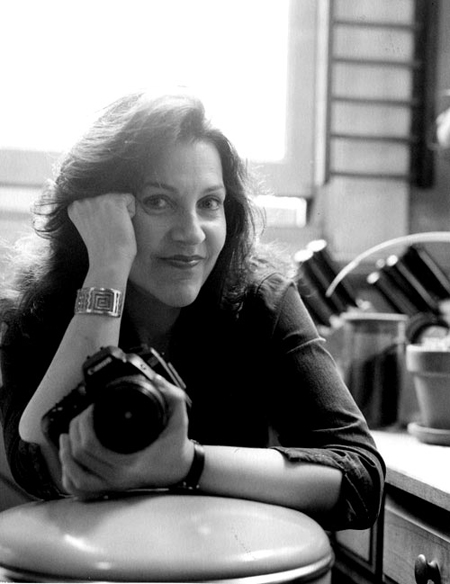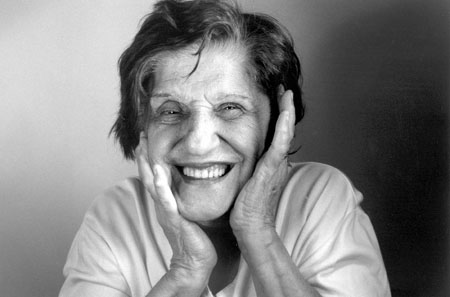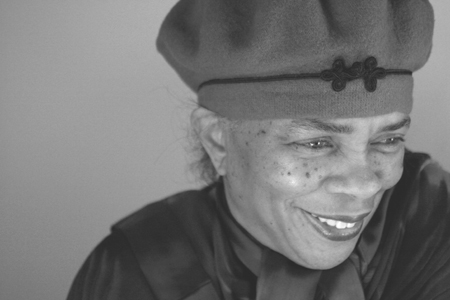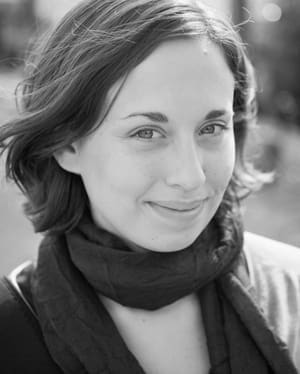The first thing you notice about Annie Levy’s portraits is the beauty of the subjects’ eyes—luminous, soulful, serene. But these subjects aren’t the conventional, young, beautiful models. Instead, with a deep, faith-driven love of personal histories, Levy focuses on two oft-neglected worlds: medicine and the elderly. She has a deep passion for sight—not merely a photographer’s interest in looks and aesthetics, but a reflection of Jesus’ ability to see people as individual works of art.
 |
Tall, vivacious, and well-spoken, Annie Levy was born and raised in New York City. Although some might say that a childhood spent in the concrete jungle stifles the imagination, Levy is a living testament to city-born creativity which she attributes to both her upbringing and her surroundings. “My parents were always encouraging of an imaginary universe,” she says. “Any inanimate object could come alive at any minute.”
A self-described “math and science nerd,” Levy attended the prestigious Bronx High School of Science, graduated when she was sixteen, and then studied film at New York University. But she always had a camera at her disposal, and her parents encouraged her interests. “My dad gave me a camera when I was very young, and when I was a teenager, he bought me a used Nikon Camera. It was a huge deal, because that was a ‘real’ camera, and as I recall, it seemed to cost a lot of money,” remembers Levy. “My parents’ priority was travel and seeing the world, so I took pictures everywhere we went.” In those days, the New York City subways were covered with elaborate, often artistic graffiti, and their function as moving art museums fueling Levy’s fascination with placing art in non-traditional settings.
While her scientific background provided some connection to the world of medicine, her training in film instilled a particular empathy with people’s stories. Levy is not simply a photographer who captures beautiful images, but one who seeks out the story in a place and seeks to create a project that says what the place is about.
In college, Levy worked with friends on creating a rock music magazine, writing articles and taking the accompanying photographers. She did an interview and portrait of punk rocker Joey Ramone for the magazine Hit Parader, writing the article in the first person. This experience helped her identify her passion for “knowing someone in their own words.”
 |
Levy’s work generally cannot be found in a fine art museum or hip Chelsea gallery. Instead, she dreams up ways to bring encouraging, inspiring art to places that non-art-lovers might be. One such project involved pairing photos of members of a senior bowlers’ league with portraits of children, showing how youthful the league members felt inside when they were bowling. She called the exhibit “Bowling: Bring Out the Kid Inside.” A sports journalist told Levy that he “couldn’t imagine bowling and art in the same sentence,” but nevertheless, the exhibit appeared in a bowling alley in New York’s Port Authority.
When considering an inspiration in pursuing this unconventional work, Levy’s inspirations include Christo—the artist who “wraps” bridges, islands, buildings, and other enormous structures in colored fabric to call attention to shape and form. “It took twenty-five years for him to make The Gates”—the public art exhibit involving wrapped “gates” placed in New York’s Central Park in 2005—and that perseverance and ingenuity inspires Levy to dream big.
In 2001, she worked with the TOPA (Toward Older Persons Awareness) Foundation at Roosevelt Hospital’s Geriatric Rehabilitation Center to create a permanent exhibit called “A Different Face.” “I am endlessly fascinated with people’s faces and how to tell their stories in interesting ways,” Levy says. Noticing the antiseptically bare hospital walls, Levy photographed luminous black-and-white portraits of patients at the Center and hung them on the walls with encouraging words, such as “strength.” Citing the difficult times that patients and their loved ones may experience in the hospital, Levy hopes that the continuing exhibit will “do much to transform what could be a very scary place into a place of hope.”
Another of Levy’s canvases was at the Judaica Museum of the Hebrew Home for the Aged, located in the beautiful Riverdale neighborhood in the Bronx. The museum, located on the Home’s campus, houses many significant artifacts of Jewish art and culture. Levy worked with the museum’s curator to create a collection for the Home that would affirm both the residents of the Home and their caregivers.
Focusing on the story of the residents, and taking inspiration from their faces, Levy asked residents to select a favourite caregiver, then took a black-and-white portrait of each and displayed them together on the walls. One hundred of these portraits were placed on walls throughout the Home, helping to enhance the sense of community and family among the residents and staff. One resident, Neville, passed away during the exhibition, but his portrait remained. As Levy says, “You don’t take down pictures of your family when they die.”
 |
The Frick Collection commissioned Levy for their “Art of Observation” program which uses art and photography in the training of medical students. Levy took atmospheric photographs of people at home. The portraits hearken back to paintings one only sees in museums today, with the subject surrounded by favorite or significant objects. In one of Levy’s photographs for the exhibit, an elderly woman sits in her late mother’s bedroom, surrounded by wall hangings and furniture left exactly the way they were the day her mother died. The photographs are used to help medical students identify the ideas they form about people by their surroundings, and to understand and empathize with their patients’ stories.
An especially meaningful project came in 2003, when Levy’s exhibit, “Ageless,” opened in the Visitors’ Lobby of the United Nations building in New York City. Part of the UN’s International Celebration of Aging, the exhibit featured works of art created by artists who as with Grandma Moses, the American painter of the midtwentieth century who did not begin painting until she was in her seventies, began making art long after most people would consider taking up a new pursuit. Each work of art was accompanied by a photograph of the artist. Mrs. Nane Annan, wife of then-UN Secretary-General Kofi Annan and a photographer in her own right, cut the ribbon and opened the exhibit. “It was a personal high point for me,” says Levy.
Following her penchant for putting art in places where people don’t normally experience great art, she pursued a similar exhibit in the lobby of New York’s Port Authority Bus Terminal. “It’s not a particularly cheerful place,” Levy says, and anyone who has spent time in the terminal would agree. “The exhibit was all about talking back to voices that said that it was too late for these artists to take up their art, and when we hung the first photographic image of the person with a huge smile on her face, I felt just great. There were bus terminal ‘hanger-outers’ watching us put up that show.”
 |
Levy generally shoots in black and white, and she recently switched to digital photography—a good switch, she says, except when the ability to immediately view a picture means the photographer is constantly looking down at the viewing screen instead of being present, in the moment, with the person being photographed. The caring, encouraging way that Levy interacts with her subjects is evident from the resulting photographs, and she counts the opportunity as a great privilege. “It is an incredible and humbling thing that people are willing to let me take their picture, that they trust me with themselves in that way,” she says.
One of Levy’s current projects moves from the realm of the aging to that of the young, but preserves her signature imaginative flair. She visited the Children’s Hospital at Montefiore Medical Center in the Bronx, where she spoke with the children there about documenting their experiences. One young boy, who Levy remembers had curly hair, wore glasses, and used a wheelchair, struck Levy as particularly adorable. She began to dream a little. “I thought, what if he were a super-hero in disguise?” When she returned home, Levy began contacting local museums in the hopes of locating a cartoonist; her idea is to have a photograph of each child paired with a cartoon of that child as a superhero. As she says, “Who doesn’t—myself included—want to be a superhero?”
Levy is also working on a project with palliative care patients, and a portrait-pairing project with live organ donors and their recipients. Echoing the imaginative environment of her childhood household, she also hopes to create a “live action” improvisational piece, in which the people in the images become more alive to the viewer. Her portraits will continue to centre on a simple question: “Why not?” She sees a blank wall in a hospital as a canvas for spreading joy to those experiencing difficult times. “I don’t know how scientific it is, but I really believe in the healing power of art,” Levy says. “I like to bring life to a dismal place.”

